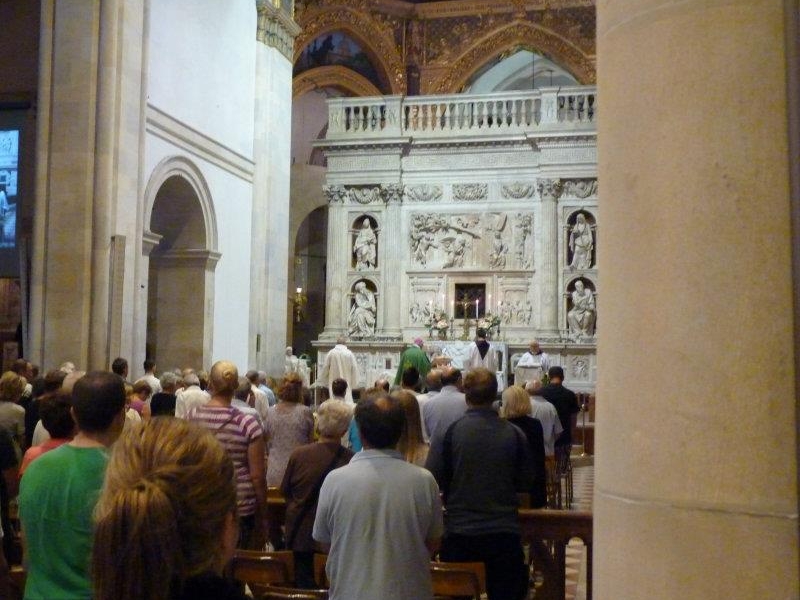
Happy Feast of Our Lady of Loreto! It was within a simple family home in Nazareth that the Blessed Virgin Mary was born. It was also there that “the Word became flesh” (John 1:14) in her womb during the Annunciation. And it is this Holy House of Nazareth which now resides in the Italian town of Loreto situated on the country’s eastern Adriatic coast. Hence today’s feast day! Ave Maria!
“I still remember my pilgrimage to the Shrine of Our Lady of Loreto fondly and vividly, even though it was now 12 years ago,” recalls David Kerr, Director of Communications for the Diocese of Lansing, who was Rome Correspondent for the Catholic News Agency from 2011 to 2012. Some photographs of David's pilgrimage are reproduced below.
“Once you set foot in the baroque Basilica della Santa Casa and enter through the ornate 16th century marble encasement of the Holy House, what becomes strikingly apparent is both the small-scale and simplicity of Mary’s home and yet here the history of all humanity, of all creation, changed forever and changed for good as a result of the Blessed Virgin’s docility to God’s will for her life.”
“Thereby lies a lesson for us all: we too can achieve great things for the Almighty amid the domestic things of life if we unite ourselves closely to God in daily prayer and ascetical living.”
Tradition holds that the Holy House of Nazareth arrived in Loreto after a miraculous rescue by a flight of angels from the Holy Land as the Crusaders were driven out of Palestine in the late 13th century.
In 1900, the pope's physician, Joseph Lapponi, discovered documents in the Vatican archive, stating that in the 13th century a noble Byzantine family, the Angeli family, rescued “materials” from “Our Lady's House” from Muslim invaders and then had them transported to Italy for the building of a shrine. The name Angeli means “angels” in both Greek and Latin.
Further historic diplomatic correspondences, not published until 1985, discuss the “holy stones taken away from the House of Our Lady, Mother of God.” In the fall of 1294, “holy stones” were included in the dowry of Ithamar Angeli for her marriage to Philip II of Anjou, son of King Charles II of Naples.
A coin minted by a member of the Angeli family was also found in the foundation of the house in Loreto. In Italy, coins were often inserted into a building's foundation to indicate who was responsible for its construction.
Excavations in both Nazareth and Loreto found similar materials at both sites. The stones that make up the lower part of the walls of the Holy House in Loreto appear to have been finished with a technique particular to the Nabataeans, which was also widespread in Palestine. There are inscriptions in syncopated Greek characters with contiguous Hebrew letters that read “O Jesus Christ, Son of God,” written in the same style inscribed in the Grotto in Nazareth.
In a homily in 1995, Pope Saint John Paul II called the Holy House of Loreto, “the house of all God's adopted children.” He continued:
“The threads of the history of the whole of humankind are tied anew in that house. It is the Shrine of the House of Nazareth, to which the Church that is in Italy is tied by providence, that the latter rediscovers a quickening reminder of the mystery of the Incarnation, thanks to which each man is called to the dignity of the Son of God.”
Due to Our Lady of Loreto being the patroness of aviators by Pope Benedict XV in 1920, the American aviator Charles Lindbergh took a Loreto statuette with him on his 1927 flight across the Atlantic while the crew of Apollo 8 carried a Loreto medallion on its 1968 flight to the Moon.
* Additional reporting by Courtney Mares, Rome Correspondent, Catholic News Agency: https://www.catholicnewsagency.com/





